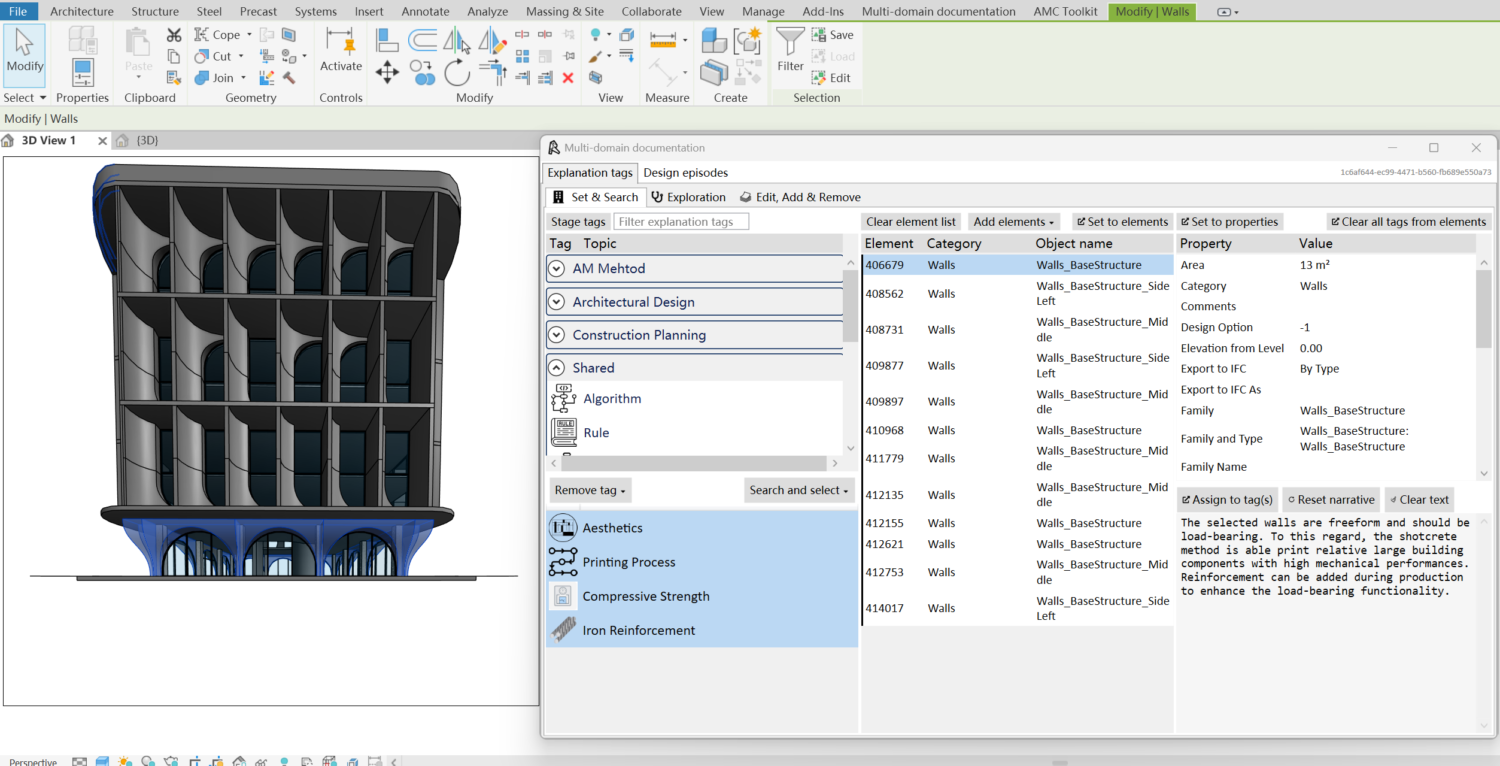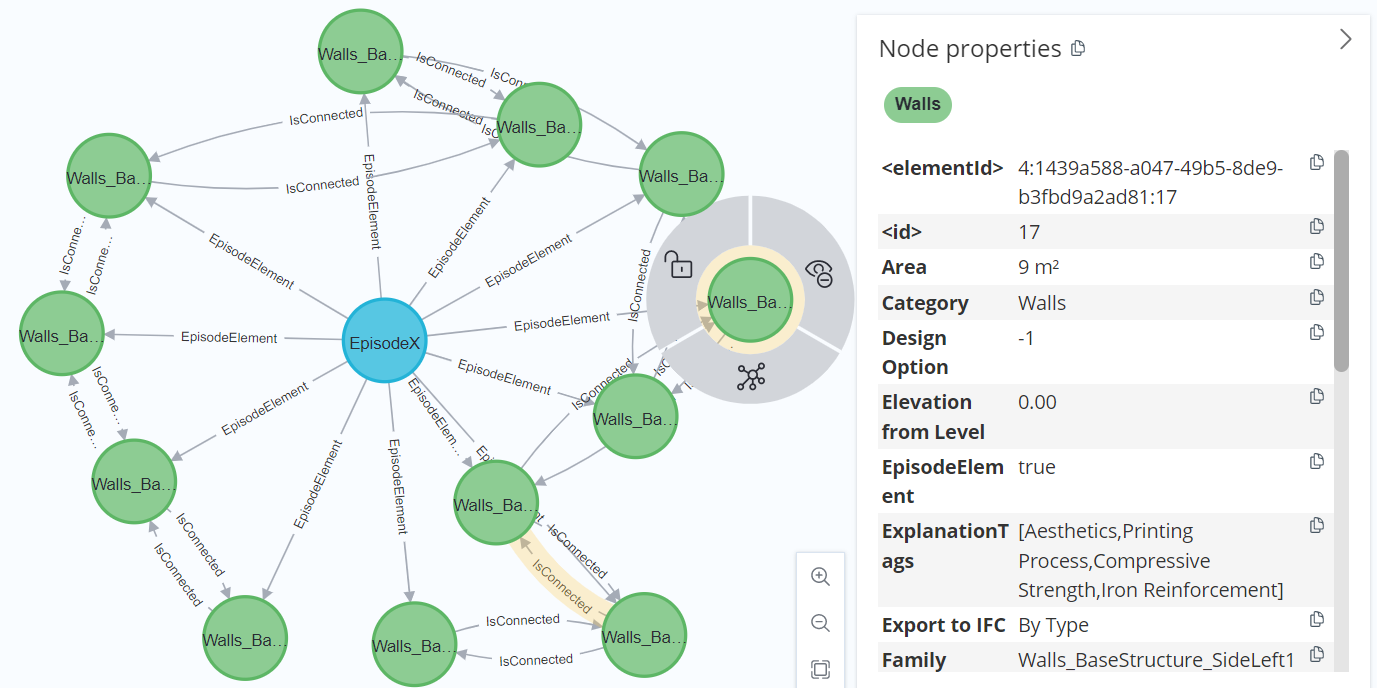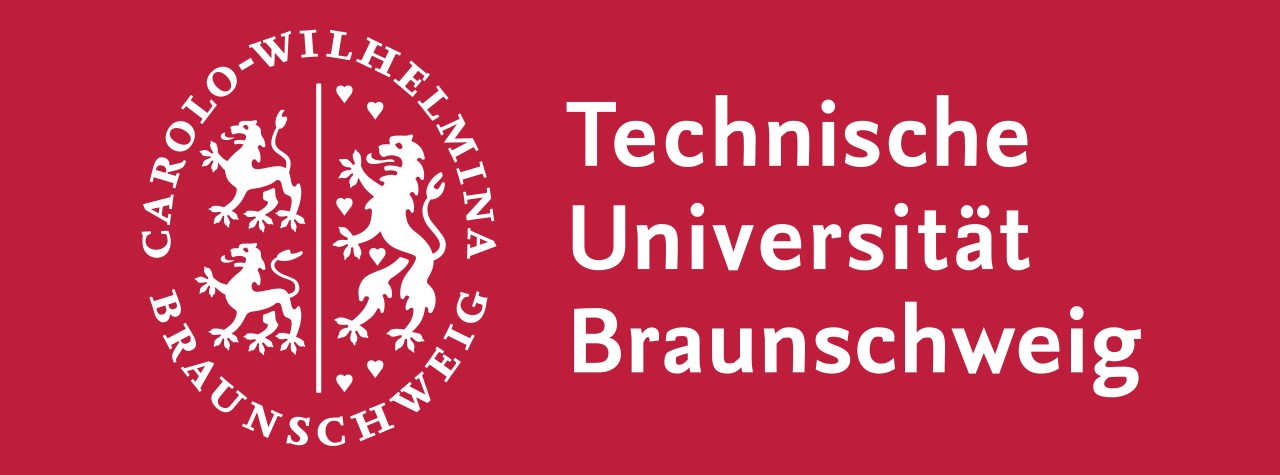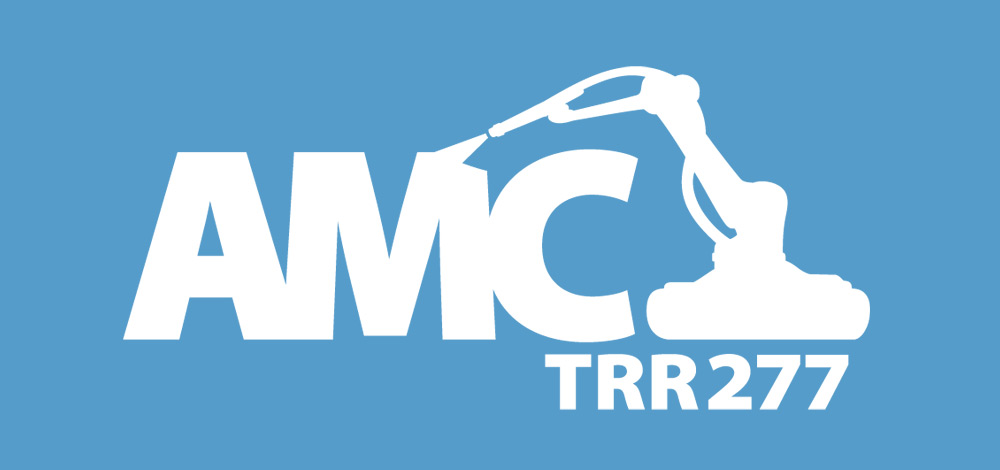Research Summary Report of C04
Integrating Digital Design and Additive Manufacturing through BIM-Based Decision Support and Digital Twin Methods
[07.06.2024]
Li, Chao; doctoral researcher, chao1.li@tum.de
Petzold, Frank; PL, petzold@tum.de
Technical University of Munich, TUM School of Engineering and Design, Chair of Architectural Informatics
Project C04-WP1 aims to conceive a design decision support system (DDSS) to integrate AM technologies in the early design phase. Project C04 has formalized a ontology-based knowledge base, enabling analysis of AM for building design regarding geometric and functional conformity. The DDSS will be strengthened by implementing the case-based reasoning (CBR) method to integrate AM experts’ know-how, experience, and practical examples into the architectural design process.
Summary
How to capitalize multi-domain expertise in a BIM-based design workflow, and how to enable interactive design decision support for additive construction? To answer this question, it is necessary to establish a mechanism covering documentation, formal expression, in-time similarity comparison, and chatbot-like query and answering, so as to achieve the goal of interactive design decision support. We are currently working on a documentation tool as an initial step.
It is known that a knowledge base (as we have established) supplies a foundation for analysis of design and its applicable manufacturing methods, it is also well-accepted that narratives and testimony are critical to continuous knowledge learning – thus a documentation tool should allow possessions and information provisioning, followed by automatic learning algorithms to complete the knowledge base. Extending the previous work of design documentation, we propose a mixture-of-domain (MoD) approach to capture expertise from multiple domains, including AM and construction planning, directly on BIM-based design that potentially to be built using AM techniques (Figure 1). The documented information, along with relevant elements in the design are seamlessly exported as graphs for the CBR routine. Additionally, textural narratives will be used as input for automatic ontology learning or training processes. In other words, based on the proposed MoD documentation, the existing knowledge base can be continuously extended, and the chatbot would have valuable input to trigger agentive behaviors.
Current state of research
At this stage we aim to provide a tailored documentation tool that directly migrates expert insights into BIM models. We have selected critical topics which need to be clarified in early design, for successful implementation of additive construction. Meanwhile, these topics are closely related to the ontologies formalized in the first funding period. For instance, narratives on mechanical properties correspond to the class of information content entity pertaining to specimens’ disposition of strength which could only be realized in course of testing processes.
Currently, it is possible to export Neo4j Labeled Property Graphs (LPGs) directly from Autodesk Revit, by using of the documentation plug in (Figure 2). Semantic information such as types of building components, spatial dependencies including connections and non-material occupancies (e.g. room enclosed by walls), diverse properties of building components, along with explanation tags/topics can all be reflected in the constructed graph. Transcription of an ontological interlayer is in so far still under work.











